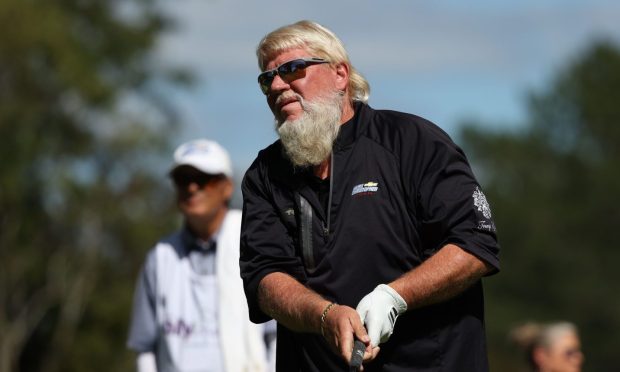Last week the R&A and USGA released their initial findings of their protracted Distance Insights Study, and – finally – what they intend to do about the issue.
In between dealing with pre-match terror and unexpected euphoria at the result at Twickenham on Saturday, I’ve tried to read as many reactions to it as possible. And the best thing to do, I found, was to rate responses on a sliding scale of ludicrous to merely minor misunderstanding.
The statement was unfortunately thoroughly couched in golf-speak, and this has been the cause of confusion for many. As often occurs when they have a joint deliberation to communicate, the R&A and USGA don’t exactly come straight to the point.
I often wonder which organisation is actually responsible for this talking-round-the-houses approach. Having dealt with a few of the blue blazers in the USGA in my time, I think I have an idea.
The new local rule is bifurcation
Anyway, once you sifted through the wordy nonsense on this statement it’s perfectly clear. They want to enshrine the local rule which they sort of unveiled two years ago, allowing competition committees to decide to enforce restricted distance equipment if they so choose. It’s basically bifurcation.
That means the elite end of golf – the major men’s and women’s tours, the top-end amateur game – will play to one set of rules and the rest of us can carry on our own sweet way.
So all these screaming passionately about ordinary players’ rights – I’m always amused how similar these people sound to the gun rights loonies in America – are missing the point entirely.
Unless you’re an elite golfer, you’re still going to be able to use whatever you like, along with those crazy non-conforming clubs that you hastily bought after watching a YouTube video.
The invasion of the giants
But it’s not just golf shock-jocks. One of the most laughable comments was one of the first, Webb Simpson’s plea to retain the 48-inch driver in case of some mythic invasion of 6 foot 10 inch golfers he thought was likely on Tour sometime in the future.
Dustin Johnson, while smiting the course in Saudi Arabia with all the relish of a ritual executioner, said hilariously that scoring hadn’t been affected by extra distance.
Eh, DJ, you do remember that you just shot 20-under at Augusta, smashing the scoring record there? It was less than three months ago, mate.
Bryson DeChambeau was, surprisingly to some, completely sanguine about it. He’d already dropped the idea of a 48-inch driver. That was the headline move in the statement, but essentially moot as no-one is using it.
Bryson said he was “flattered” that he had influenced some of the moves, but he’d play within whatever rules were set.
It just adds to the general impression that the fun for DeChambeau is less winning than changing the game. He gets his real kicks from figuring ways to improve himself around the rules. He’s relishing getting back in the laboratory.
Rory’s curious stance
The oddest one was Rory McIlroy, though. First he invited questions on the statement at the end of a zoom session to berate the governing bodies. It was “a huge waste of money” pursuing this issue which affected 0.1 per cent of golfers.
But then he conceded he supported bifurcation. It made one beg the question whether he’d actually read or interpreted the statement properly. I know he’s easily smart enough to have made the same conclusion that I and others did.
He’s dead wrong about the “waste of money”. This is a live issue that affects golf and beyond that the oft-forgotten environmental impact of building and maintaining longer and larger courses. The governing bodies had to do something.
And the idea that this has been done at the expense of developmental and participation programmes is simply untrue. Anyway, Rors, weren’t you the one who said not so long back that you didn’t believe in “growing the game”?
He agrees entirely with the main thrust of the statement. So what’s the actual problem?
I suspect McIlroy was playing to the gallery. The “waste of money” comment ended up the headline in many outlets. He’s nominated as chairman of the PGA Tour’s player advisory council – Scotland’s Russell Knox is another candidate.
That headline would have sat well with the tour’s rank and file. They really don’t want any change, ever, unless it further fattens their wallets. It also probably pleased his partners at Taylor Made and other manufacturers.
The governing bodies have to seek consensus, even when there’s none
In one way I sort of agree with the waste of money line. If they’d imposed bifurcation years ago – plenty of sage voices called for it – it would be entrenched already.
But that’s not how they work, nor how they CAN work. They have to adopt a conciliatory position, to try to please all and not offend anyone. Obviously that’s impossible, but there you are.
I think at least now we’re headed in the right direction. And the first time I hear a reasoned argument against bifurcation, I promise I’ll let you know right here.





